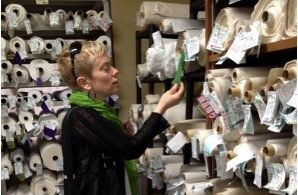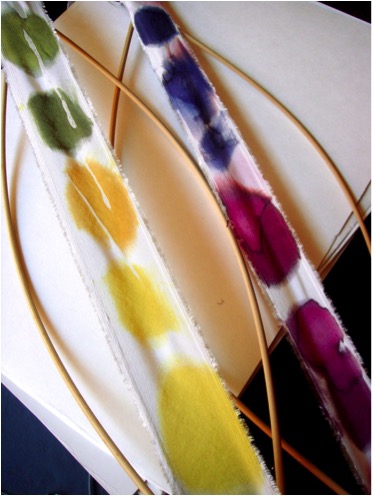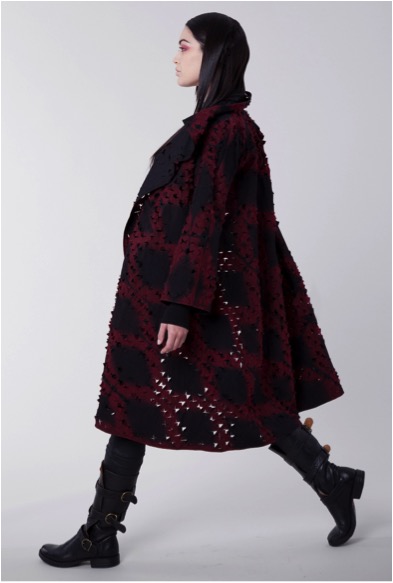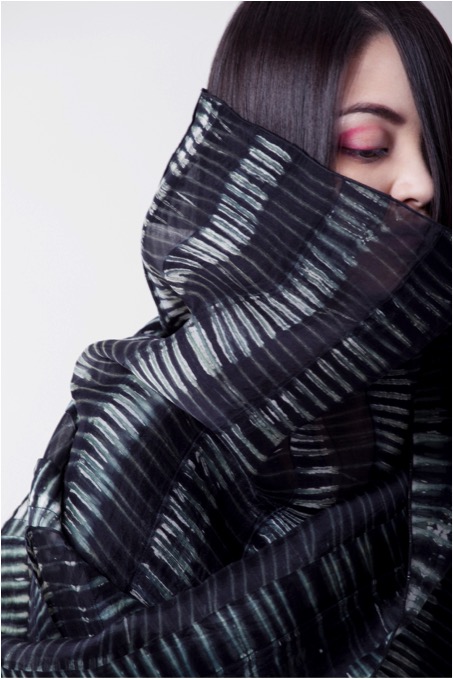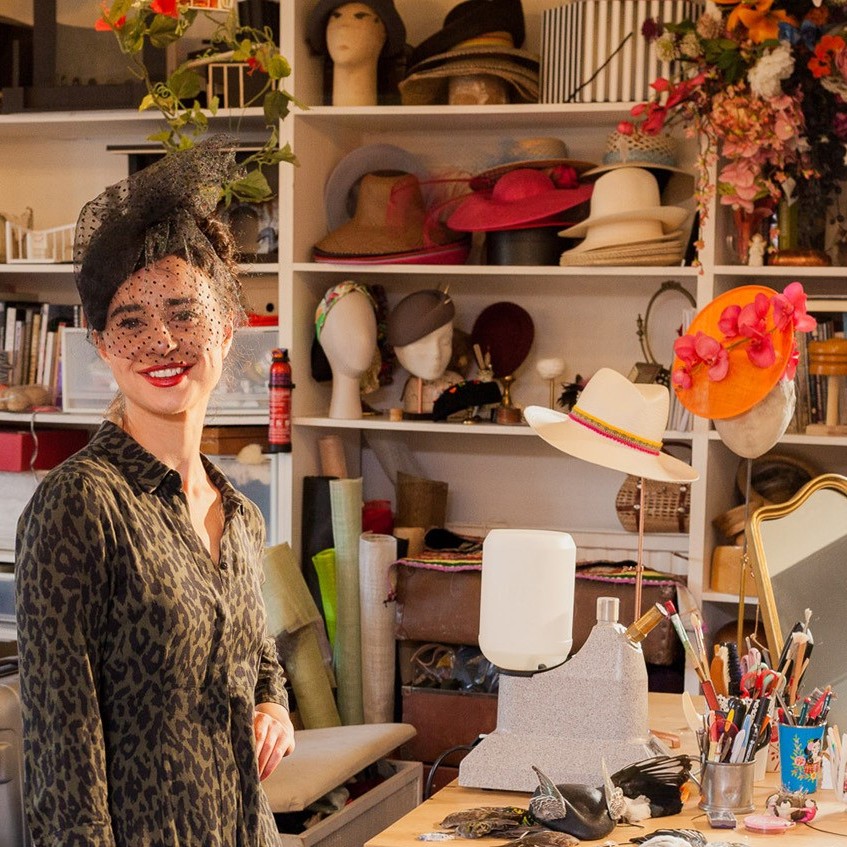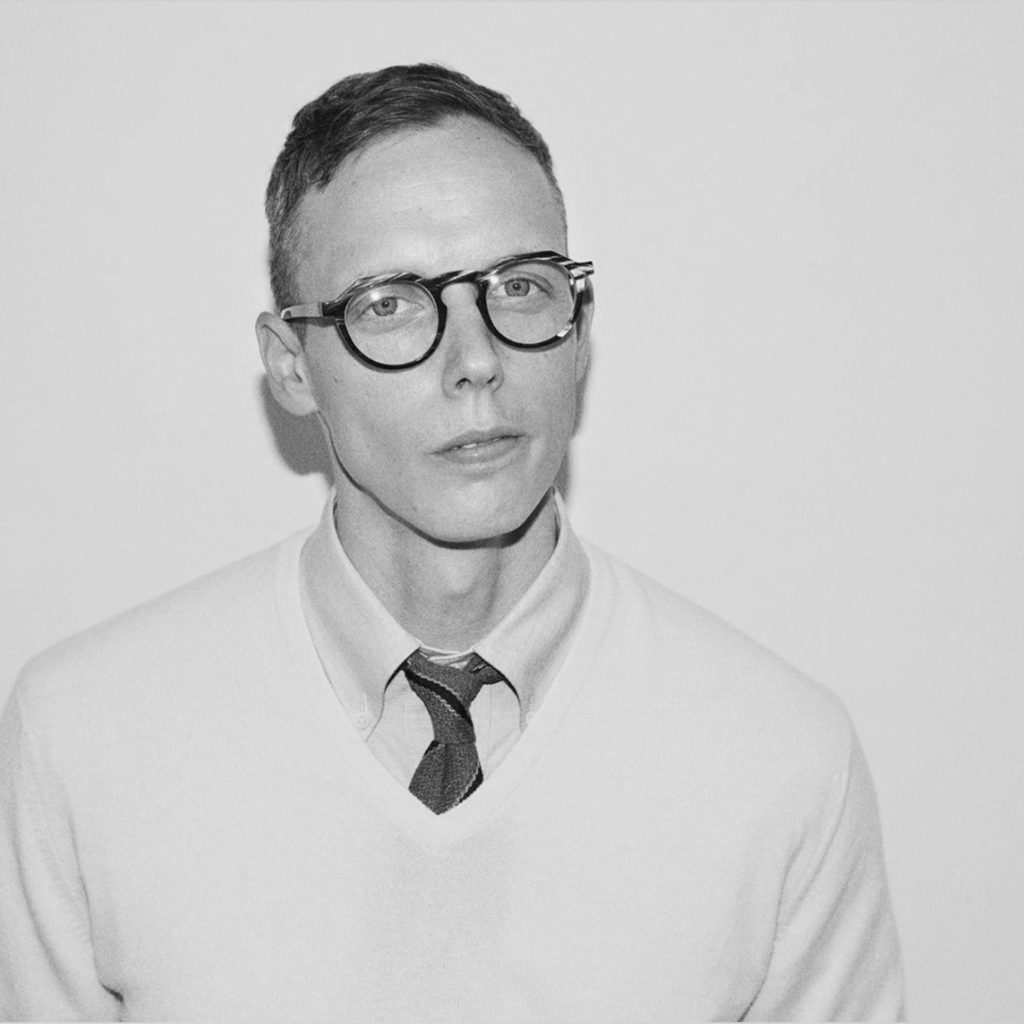Amy Nguyen Textile Artist - Boston, MA, USA.
Please comment on your relationship with Mary Edna Fraser and where it has led you?
Mary Edna Fraser and I connected after I graduated from college. I had decided to stay in Charleston SC to work and was custom sewing for a local company. Mary Edna Fraser needed someone to sew her hand-dyed fabric into dresses for her daughters for a special occasion. I was inspired by her beautiful batiks after visiting her studio. When she visited my small studio and saw my paintings, she posed the question of putting my artwork onto fabric. I loved colour and creating on a blank surface and had grown up around textiles, so the idea was a terrific fusion of both. She planted some important seeds in my head that year and I am forever grateful to her.
I’ve seen Mary Edna Fraser just a few times since leaving Charleston. We connected at the Peabody Essex Museum, north of Boston, in conjunction with the World Batik Conference. At that time, she gave one of the best piece of advice: always do something new, no matter how small a change. I do try to practice this often. Slight changes keep me from becoming stagnant in my work.
Discuss the importance of shibori in both your early and current work?
In the beginning, shibori was the primary focus of my work. I experimented with a wide range of mark-making and colour-mixing. Now, my work is a balance of shibori and subtle textural components through stitch. The complexity in the work continues to grow. My stitching adds a layer of dimension to each piece. I will always enjoy shibori mark-making, but I will likely always enjoy, even more, the challenge of taking that traditional surface down a different path.
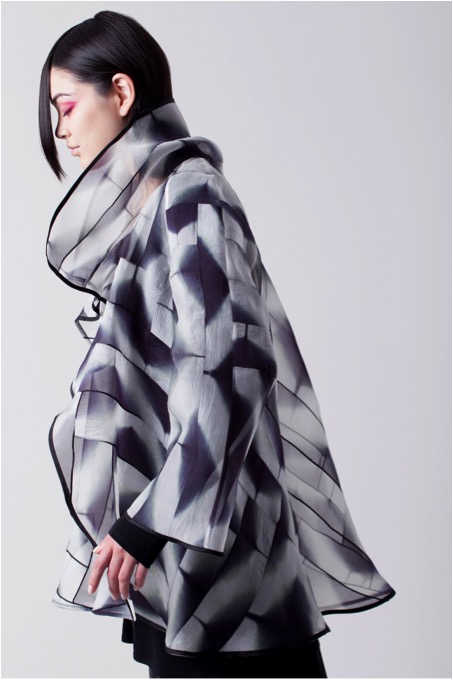 Do you still take Jason Pollen’s advice, to carve out a small bit of time each day to experiment with no outcome in mind?
Do you still take Jason Pollen’s advice, to carve out a small bit of time each day to experiment with no outcome in mind?
I really try to. Sometimes I’m not able to carve out as much time as I’d like. The business end of the arts can take an enormous amount of time with all the moving parts. But, I certainly appreciate the importance of carving out time to experiment and I come back to it as often as I’m able. I find it is always a good way to center myself when I don’t know where to begin.
Where has one of these small pieces of time lead?
These small experimentations have ended up in my sample books, to which I often refer. Each one leads to a slightly different textural technique. If I end up with a lot of the same grouping, or pieces that work together, I will use those pieces in a one-of-a-kind garment. Every thread is precious. I recently sold a one-of-a-kind coat to a favourite collector and she exclaimed, as we were admiring the piece, that it felt old and special. She had sensed the age of the fabric behind it. She sensed the soul of the piece. I suppose when you think of this question on that level, one could realize the collective importance of small things.
You work with a very limited palette, can you discuss this?
My early work was all over the place. It was not developed. I was beginning. In many ways, I feel like I stopped and went back to square one with black and white. I started to create shibori using a very limited palette. This allowed me to further develop my techniques, as limiting materials allows for more creativity in my artistic development.
I’ve always loved black and white, the contrast, the dimensionality, the tension between both. I go through periods where I love colour, but I often come back to black and white. While living in Boston I will always remember some time spent with Saundra Lane and her collection of black and white photography. Adams, Stieglitz and Weston pushed boundaries with only black and white. There is much to explore with everything and with nothing which these two opposing “colours” represent.
Explain your own shibori method of second layering?
Second layering is not part of the shibori dyeing process. I suppose it’s more abstract. It is my second part of process, or layering of process, when I deconstruct and remake the shibori by piecing, layering, tearing, or other methods of fabric manipulation. The dyed cloth is so beautiful on its own, but I find this compulsion to add weight, to make the fabric feel more grounded and to put my own mark on it. Thread is that weight. Stitching helps the piece to feel real.
What base fabrics do you use?
I love all natural fabrics. Mostly I use linen, silk, cotton and wool. When I first began creating shibori, I used man-made fabrics that could be heat-set to change the structure of the fabric. I don’t mind using man-made fabrics if they are recycled or repurposed, though the hand of natural fabrics is what I love most
Can you discuss the blending and balancing of the artistic, spiritual and physical in your work?
When I am deep into a day of dyeing and sewing, the process is very physical and repetitive and this allows me to meditate. I have recently started to practice tai chi and I find I am most focused after a class. I often find myself back in the studio. When my head is clear, artistic inspiration can spring up from doing the most basic daily things. Artistic, spiritual and physical all can become one in a moment of flow. Or, they can at least influence each other. There is a balance that must exist in order for me to create.
Explain your thoughts on keeping age old textile traditions within modern fashion?
I believe we have a need to retain tradition, pride in our community and our history. Modern fashion must exist as well, but with careful consideration of its effects on the environment. There should be a balance of old and new. For example, my dye techniques are by hand. Some of my stitching techniques are by machine. We are small-scale and care about every piece. It shows.
I don’t agree with disposable fashion. We have become a society of much waste and fast-paced consumption that is affecting the earth. I like the idea of having few pieces, well-made that express who you are. I certainly recognize that items like socks, underwear, leggings, basic black clothing need to be affordable. These items can be mass-produced as long as the company that is producing them stands behind protection of the environment, sustainable practice, and fair pay. As consumers, we should be asking where things were made, how they were made, who made them? In order to keep some of the old tradition, we can ask these questions of designers and support those who work the most fairly. We can support local stores. We can support smaller stores. And when we buy those particular pieces to express who we are, I think we should buy less of them…and really cherish what we have.
You emphasise the importance of handmade in your work. Why is this such a major part of your textiles and finished garments?
I’ll never forget the collector who recognized the soul in the coat I’d made – who sensed there was older fabric in the piece. Part of the cloth that went into that particular piece was from my mother’s stash of sewing fabrics. It was a beautiful silk/linen ivory cloth intended to be a suit she had wanted to make but never got around to making. This was a special moment for me – to have someone truly understand the soul of a piece. That is also why part of my work is handmade. There is an inexplicable soul in anything made by hand. I firmly believe in this. It is in direct opposition to fast consumption. We slow down – not just those making it, but those wearing the pieces as well.
Explain your interpretation of ‘Slow Textiles Movement’?
Slow movements, in general, represent a cultural shift towards slowing down the pace. The slow food movement has gained considerable momentum and now, I believe, slow fashion is following. We should know where our food comes from and how it was handled. We should know who makes our clothing and where it comes from. It really is just about being more present and more aware of the world that surrounds us. This is the main premise behind the slow textiles movement. I’m also paying attention to how we work in the studio, what I pay my interns, what we recycle and, most importantly, the quality that is going to a collector.
There is another layer to this for my work. Many of the pieces that we create are considered wearable art. Additionally, they involve an aspect of art, of craft and of fashion. These pieces have emotion behind them, they are made up of highly skilled technical craft and they are relevant today. Adding all of these additional layers creates pieces that are true works of art. They are authentic and people deserve this.
Couture is a word that we relate to high fashion. Your work has that very high finish. Can you discuss the importance of this?
Many processes, technical skill and collaborative work are all certainly a part of the pieces created here in the studio. The same could be said of couture. We have 4 different aspects of process and each one is of equal importance. First, the creation of the surface design work – the dyeing of the cloth. Next, the fabric manipulation and intricate stitching of the cloth. Third, the patternmaking of the garment shapes – turning two-dimensional into three-dimensional. And last, the finishing or very detailed final touches. Couture pieces are a true reflection of the artist. I feel each piece made should be both a true reflection of myself as well as of my respect for the craft and history behind each aspect of process.
The photography of your work is beautiful. Can you explain how you achieve such wonderful images?
In the beginning, my husband and I took our own photographs, which were flat and lacking in dimensionality. After viewing numerous headless shots with mediocre lighting, I came to the realization that we needed to collaborate with professionals who understood the emotions I was trying convey. I strive to create masterful work in the studio. Each person with whom I collaborate is doing the same in their own field. When great collaboration happens, it’s because the ego disappears and each person understands their role and yet has respect for each other. This ensures that each photograph evokes the feeling that existed in the creation of the piece. My goal is to seek the best in every aspect of what we create and to know that I cannot do it all. I’m not the photographer or the artistic director or the stylist, yet we all have a similar vision. In that room, I am only the artist/designer, one part of the whole.
Do you design seasonally? How do you add to the collection?
I add to the collection as process develops or changes or if something inspires me. I don’t create collections such as fall, resort and spring. Most of my pieces can be worn at least three seasons in different ways. That’s what I like in my own clothing. I find the less clothing I own, the better I feel. When I update a piece in my own wardrobe, another piece gets donated. I find it’s best to have pieces that work well and can be worn often that are loved each time they’re worn. When we love our clothing, we possess a wonderful energy. I care more about creating the garment with thought and care then making sure I have a collection available on a particular date. Each season does influence us some and I always offer some aspect of work that makes sense within the season. I love linen, for example. People say it’s only for summer. What about quilted linen?
What is one basic garment you would not be without?
A wrap (which can become a garment). I use one in the summer, in the winter crinkled and bunched as a scarf and during meditation.
Contact details.
amynguyentextiles@gmail.com
www.amynguyentextiles.com
Amy Nguyen, Boston, MA, USA
Interview by Deborah Blakeley, October, 2014
Think a colleague or friend could benefit from this interview?
Knowledge is one of the biggest assets in any business. So why not forward this on to your friends and colleagues so they too can start taking advantage of the insightful information the artist has given?
Other artists you may be interested in:


